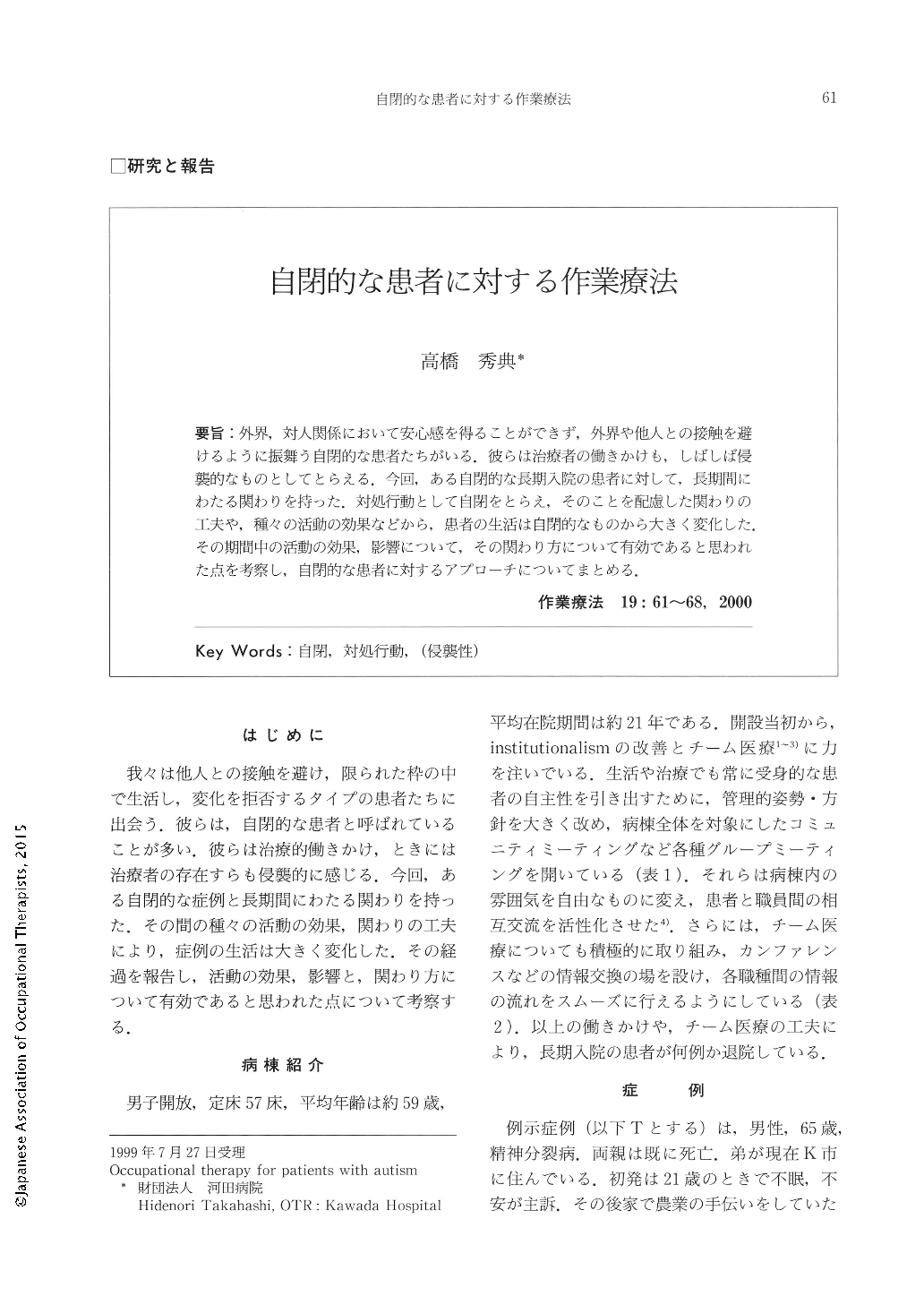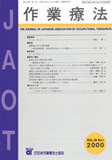Japanese
English
- 販売していません
- Abstract 文献概要
- 1ページ目 Look Inside
- 参考文献 Reference
- サイト内被引用 Cited by
要旨:外界,対人関係において安心感を得ることができず,外界や他人との接触を避けるように振舞う自閉的な患者たちがいる.彼らは治療者の働きかけも,しばしば侵襲的なものとしてとらえる.今回,ある自閉的な長期入院の患者に対して,長期間にわたる関わりを持った.対処行動として自閉をとらえ,そのことを配慮した関わりの工夫や,種々の活動の効果などから,患者の生活は自閉的なものから大きく変化した.その期間中の活動の効果,影響について,その関わり方について有効であると思われた点を考察し,自閉的な患者に対するアプローチについてまとめる.
This paper presents a case study on the discovery and progress of a unique occupational therapy approach to treating mental health patients who also autistic.
We occasionally encounter patients who withdraw from the outer world and human relations because they cannot acquire a sense of security.
Even treatments with good intention can be perceived to be threatening and invasive to such a patient.
Recently, I treated a patient with chronic schizophrenia and who was also autistic.
He had been in hospital since he was 26 years old.
This patient's autistic behavior was regarded from the perspective of "coping".
A unique treatment plan was constructed in a manner that took his "coping" into consideration.
Five key points toward his treatment were established:
1. To regared his autistic behavior in relation to "coping", and to help him make use of "coping".
2. To accept his negative reactions and passive attitude.
3. To persist in affirming his sense of security so that he could be conscious of it.
4. To patiently await his changes and proceed at his pace.
5. To not limit his treatment to only one activity, but to assemble and utilize several activities.
By applying these points, changes in the patient's autistic behavior and his daily life were observed.

Copyright © 2000, Japanese Association of Occupational Therapists. All rights reserved.


